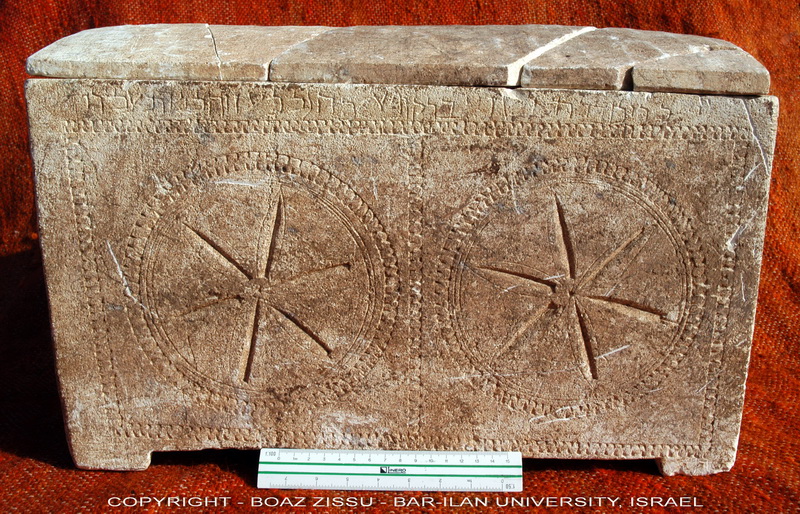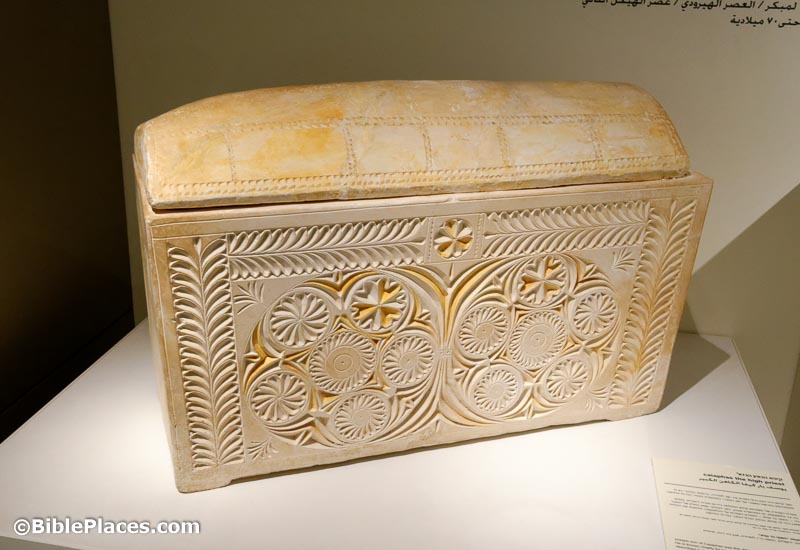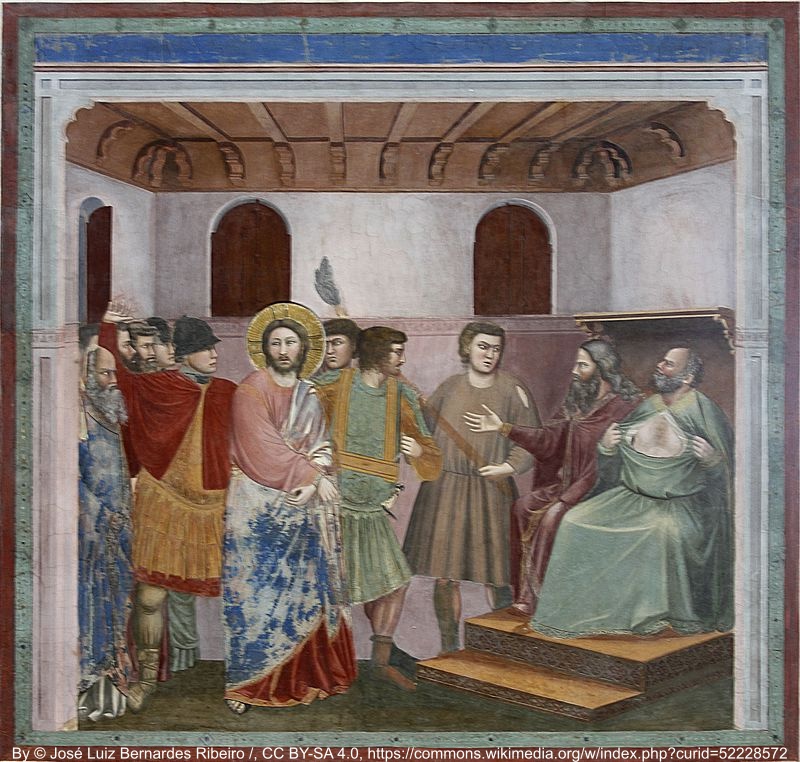This series of posts examines the historical reliability of the New Testament books of Luke and Acts by comparing these books to other ancient textual sources and the archaeological record. Supplemental information of additional interest is often given as well.
One of the eight persons mentioned in Luke 3:1-2 is Caiaphas the high priest. There are a number of references to Caiaphas in historical sources with one being inscribed on a recently discovered burial ossuary of his granddaughter Miriam that, in addition to Miriam, makes reference to both Caiaphas and his son Yeshua. This discovery was announced in 2011 in the Israel Exploration Journal (V. 61, N. 1), and the following photo, which is used with the permission of Dr. Boaz Zissu, depicts the ossuary:
The text, which is located along the upper front rim, is translated from Aramaic into English as:
Miriam daughter of Yeshua son of Caiaphas, priests of Ma’aziah from Beth ‘Imri
Further, a second ossuary inscribed with the name “Caiaphas” was found in Israel in 1990 and can now be seen in the Israel Museum in Jerusalem. Though not entirely certain, this ossuary is commonly thought to belong to the high priest Caiaphas himself, and the bones found within (those belonging to a 60-year-old man) may have been those of the high priest.
The following picture depicts this second ossuary, and an article in the NY Times from 25 years ago announcing its discovery can be found at this link.
Of additional interest is the fact related by the 1st-century Jewish historian Josephus that Caiaphas was also known by the name “Joseph” (Antiquities 18.4.3).
Because of his high profile in the New Testament, Caiaphas has often been depicted in various works of art over the centuries. One famous portrayal is located in the Scrovegni Chapel in Padua, Italy (outside Venice). The interior of the chapel was painted by the early Renaissance painter Giotto and dates to c. 1305. Though not as developed and awe-inspiring as later High Renaissance art (ca. 1500), this painting depicts an early attempt to portray perspective (depth) and a more natural lifelike world from which later artists would learn and progress. For those interested in historical studies, particularly art history, the chapel is well worth the visit.
Caiaphas is the seated figure who is tearing his shirt at the testimony of Jesus as noted in Matthew 26:65.
For other similar correlations between the biblical text and ancient sources, see Bible and Archaeology – Online Museum.



5 thoughts on “Luke & Acts (7): Caiaphas”
note: the original caiaphas ossuary
was first announced in an article by Bivin in his http://www.jerusalemperspective.com and then followed up by BAR, etc.
The issue of Jerusalem Perspective is available here
https://archive.org/details/Issue3334
A.D.
Thanks bkvasnica and A.D. I thought the NYT article was an interesting piece on the Caiaphas ossuary, even a bit of history itself being some 25 years old; but your suggestion regarding the Jerusalem Perspective is certainly a good one! The more links, resources, etc. the better; so please continue to do so with future posts in this series. The posts come out the first Monday of each month (most of the time). Thanks again.
I thought I had saved all these articles, but somehow I seem to have lost the links for #3, #6 and #8
If you use the search box in the sidebar and search for "Luke & Acts," all previous posts will be listed.